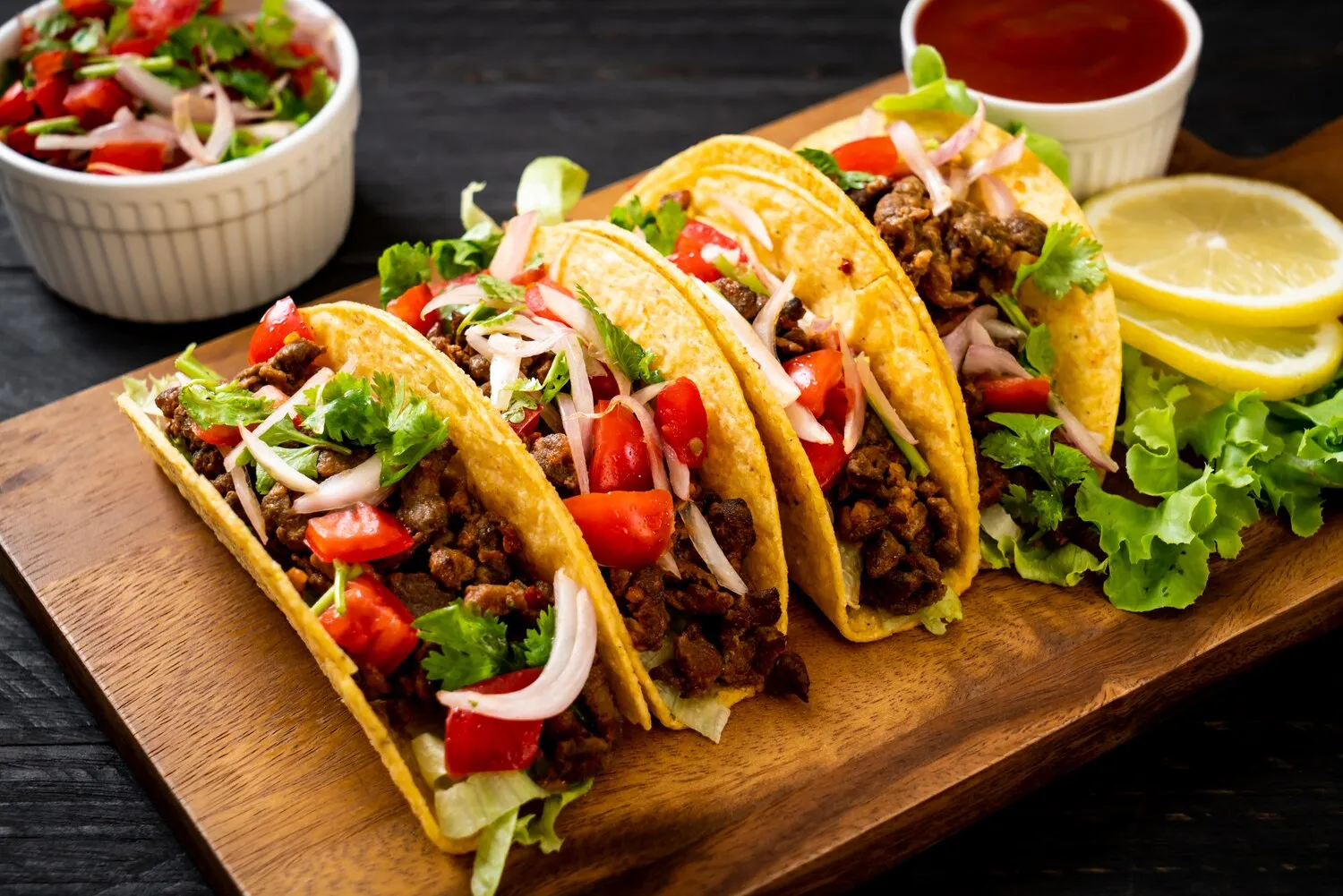
Tacos de Tripa
Tacos filled with crispy fried beef tripe.
Nutrition Facts
* The % Daily Value (DV) tells you how much a nutrient in a serving of food contributes to a daily diet. 2,000 calories a day is used for general nutrition advice.
Tacos Selene
The practice of utilizing all parts of the animal, including offal like tripe, has a long history in many cultures. In Mexico, this tradition dates back to pre-Hispanic times, evolving with the introduction of new cooking techniques and ingredients from Europe. Tacos de Tripa represent a culinary continuation of resourcefulness and flavor maximization.
Tacos de Tripa are deeply embedded in Mexican street food culture, often found at taquerias and street stalls throughout the country. They are a testament to Mexican culinary ingenuity and resourcefulness, transforming humble ingredients into a beloved dish.
Street Food Staple
Tacos de Tripa are primarily consumed as street food, quickly prepared and enjoyed as a snack or light meal. The aroma of sizzling tripe is a common and welcoming scent in many Mexican towns and cities.
A Dish for the Adventurous
While popular, Tacos de Tripa are sometimes considered an 'acquired taste' due to the nature of the ingredient. It's a dish that often appeals to those with a more adventurous palate and a willingness to try unconventional ingredients.
Regional Variations
Though generally similar across Mexico, regional variations exist in the preparation and accompaniments. Some regions may use different cuts of tripe or prefer specific types of salsa.
Tacos de Tripa offer a contrasting and complex flavor profile, balanced between the savory, rich taste of the tripe and the fresh, vibrant accompaniments.
The defining flavor comes from the beef tripe itself, which, when properly cleaned and cooked, offers a slightly earthy and funky taste. Frying it to a crisp texture intensifies the savory notes and provides a satisfying crunch. Common seasonings include salt, pepper, garlic, and sometimes bay leaf during the boiling process. The tacos are typically served with finely chopped white onion, cilantro, and a squeeze of lime juice to cut through the richness and add brightness. Salsa, ranging from mild to very spicy, adds another layer of complexity.
Thorough Cleaning is Key
Proper cleaning of the tripe is crucial to remove any impurities and unpleasant odors. This involves multiple rinses, soaking in water with vinegar or lime juice, and careful trimming.
Cooking to Tenderness
The tripe needs to be cooked until tender before frying. This is typically achieved by boiling it in water with aromatics until it reaches a soft consistency.
Achieving Crispy Texture
Frying the tripe at a high temperature in oil or lard is essential for achieving the desired crispy texture. Avoid overcrowding the pan to ensure even cooking and browning.
Serving Immediately
Tacos de Tripa are best enjoyed immediately after frying, while the tripe is still hot and crispy. The texture tends to soften over time.
Explore additional Tacos dishes and restaurants
Explore TacosDiscover top dining spots and culinary experiences in Aurora.
Explore AuroraLearn more about the food culture, restaurant scene, and culinary heritage of United States.
Explore United States